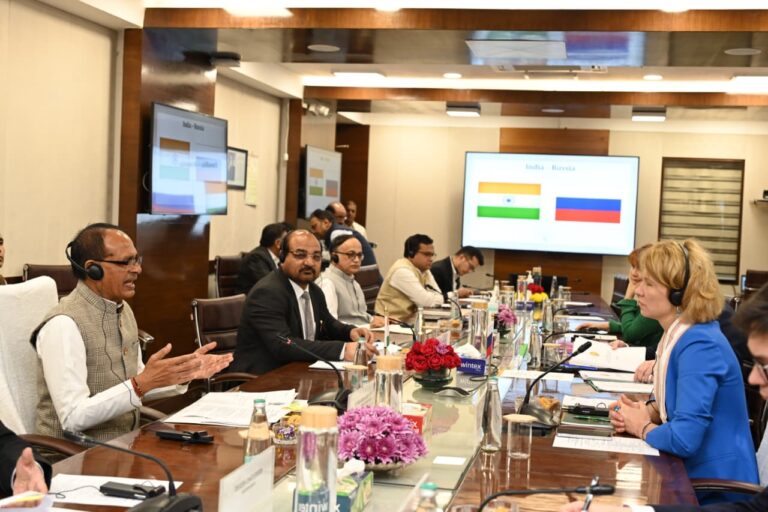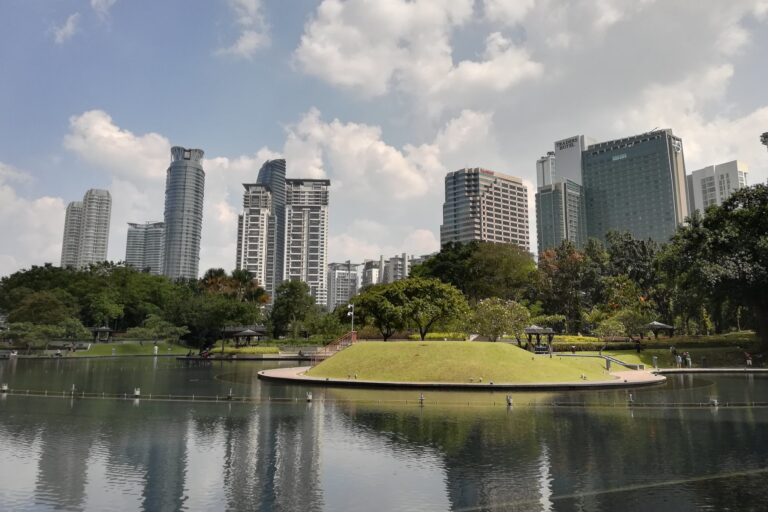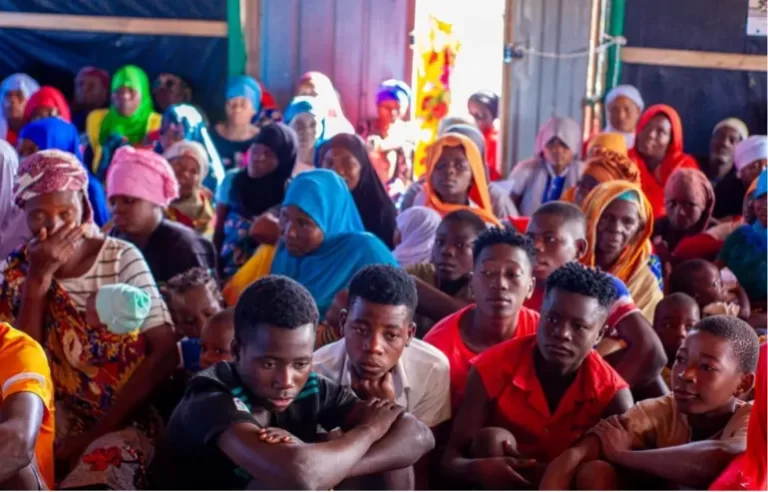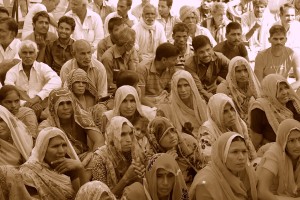
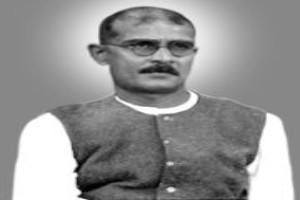 By Mahadev H. Desai*
By Mahadev H. Desai*
The Gosaba Estate: In a population of 10,000 there was no case, criminal or civil, ever in the law courts
I shall come now to the Estate itself. As I have already stated, the beginning of the Settlement was made with an uncertain population of a few hundred labourers who were induced to take up land and to build houses. Today, it comprises 25 villages, with a population of 10,000. The very first problem that Sir Daniel tackled was that of the redemption of debts of his tenants. He found that many of those who came from the Midnapore district were heavily indebted, that most of them had paid as interest very much more than the principal, but that the whole of the principal was outstanding and that the minimum interest they paid was 25 per cent.
Sir Daniel tactfully handled the creditors and cleared the debts of all those tenants and got the Estate to lend them the amounts, making them repayable in easy instalments on 12 ½ per cent interest. Next he got into touch with the co-operative department and induced some of the tenants to go and study the working of the co-operative credit societies in a neighbouring area. They did so and returned, but thought it was too much of a bother to work co-operative societies when the Estate was there to lend them money. But the lesson of co-operation, thrift and management of one’s own affairs was steadily dinned into their heads, and the beginning was made with the opening of two co-operative societies in 1915. Side by side with this was started the experiment of forming village Panchayats to deal with disputes arising among the tenants of the Estate. The experiment has been so successful that it would be difficult to cite another instance of a compact area with such a large population, with smooth-running, exceptionally well-managed co-operative credit societies.
Also read: History Recalled: Towards an ideal zamindari -3
I visited several villages on the Estate and talked to people, questioning and cross questioning them in detail, and examined their records also. I found that not only were the loans being repaid fairly regularly, but that they were being appropriated for the purpose for which they were borrowed. I examined the records of the village Panchayats and was agreeably surprised at the orderliness, precision and cleanliness with which they were kept. One can understand the phenomenon that the Estate people owe no debts to outside creditors, from the fact that, in an Estate so safely far from the haunts of money-lenders, there are no opportunities for going in for fresh commitments, and from the fact that there is a rigid embargo on money-lending, as between the tenants, on the Estate. One can also understand the regular payment of the loans from the automatic arrangement with the co-operative rice mill, which collects the members’ paddy, and the co-operative bank which credits the proceeds to rent and repayment of loans. One can understand, too, the smooth working of the co-operative societies from the fact that Sir Daniel has succeeded in inducing Government to have the services of an auditor posted on the Estate to inspect and examine the accounts of the societies regularly.
What is remarkable is the fact that in a population of 10,000 there has been no case, criminal or civil, that has ever gone to the law courts. As I examined the records, I came across the proceedings – elaborate enough – of an intricate partition case that the Panchayats had tried and decided to the satisfaction of the parties. No wonder a Calcutta Barrister said that the Panchayats in Gosaba administered justice more expeditiously and with more fairness and equity than law courts and without any expense whatsoever.
The secret of this lies in the high moral tone that has been set by the founder of the Estate. Inquiry elicited the information that there was no toddy or liquor shop on the Estate. Years ago, I was told, there was a case of illicit distillation on a neighbouring Estate, and Mr. Prentice, the then District Magistrate, immediately took steps to have a toddy shop opened on that Estate. The Gosaba Estate Manager protested in vain. Sir Daniel sent urgent cables of protest from Scotland without any result. It was when the Governor visited the Estate next year that they could persuade him to have the shop on the neighbouring Estate removed and the people of the Gosaba Estate thus placed beyond the reach of temptation.
This itself must have had a remarkable moral effect, apart from the fact that Sir Daniel himself is a teetotaler. To the question whether he smoked, he gave a direct, telling reply: “I cannot afford to smoke.” When one comes to think of it, can anyone afford to smoke? I am told that he is such a martinet that he combed out some bad characters from the Estate, paying from his own pocket the expenses of their repatriation to their old places.
Another thing that has been brought home to the tenants is that unaided agriculture is a hazardous occupation and that it must be supplemented by subsidiary occupations. Sir Daniel posted on the Estate an expert weaver and persuaded the villagers to learn the art of weaving. I could not ascertain the exact number of looms working on the Estate, but in a village of about ninety homesteads that I visited, I was told that there were about thirty looms.
I went into the hut of a youth of about twenty who was busy getting ready the warp of sizing. I asked how much land he cultivated. He laughed and said his father cultivated some bighas of land. I found that the reason why he laughed was that he had quarreled with his father and had separated from him and that he had, therefore, no land of his own to cultivate. “How, then, do you earn your living?” I asked. He said: “By weaving.” He had a wife and child, and though he could not tell me exactly how much he earned, it was nothing less than Rs. 125 in a year. He learnt the art on the Estate and he was happy that he could make both ends meet, though his father had turned him out. I met another man whose family had about 120 bighas of land, who with his brothers cultivated the land, and besides produced enough cloth for the whole of the family and had something left to sell also. This man was a weaver before he came and settled on the Estate. He came, with no Estate, with some debts and entirely dependent on agriculture labour. Now, at the end of twenty years, he was an agriculturist in his own right, and if he elected to leave the Estate, he was at liberty to sell his tenancy right for Rs. 2,400. There were quite a number of such cases.
Sir Daniel has also an agricultural farm, the expenses of which are all paid from the Estate, save the salary of the officer in charge of the farm. This gentleman is making experiments in the improvement of seeds, and as a result of five years’ experiment, a variety of rice – Gosaba No. 23 – has been discovered which yields 12 maunds a bigha, on which other varieties yield only half as much. The villagers have been encouraged to set aside part of their land for vegetables, and I saw in some villages plots of cabbage, cauliflower, radish, turnips, brinjals and tomatoes beautifully laid out, and small gardens of bananas.
A fillip has been given to this movement for vegetable plots attached to each household by Sir Daniel setting apart ten bighas of land for each school in the villages, the teacher in charge to cultivate the land and to grow the vegetables with the help of the boys, and to take the proceeds in lieu of part of his pay. I visited several schools and cound that they had fine vegetable plots, the one attached to the Middle English School, which has a hostel for boys, having a flourishing vegetable garden.
The Estate, with its 19 credit societies, its co-operative bank for financing these societies, its co-operative sale store, with three branch stores, a co-operative rice mill, is a study in co-operation. I have no space to go into the details of these institutions, but it is entirely due to the efficiency and honesty of the staff (composed entirely of villagers in the case of village societies) that all these institutions are running without a hitch or a jar and in close co-operation with one another.
The ‘Rural Reconstruction Institute’ at Gosaba was founded in 1934. It has an ambitious plan, Sir Daniel’s ideal being to produce a number of agricultural and co-operative experts to take charge of rural societies with which he wants to stud the villages of Bengal and to solve the unemployment problem. Sir Daniel frankly admits that much of the success of this depends on the co-operation that Government would be ready to vouchsafe to him, but the ideal of turning out graduates in the art of independent livelihood (I.L.A.’s as he calls them) is a fine one. I saw half a dozen youths (Matriculates) working in the fields attached to the Institute, and I had talks with them. The Institute is still in its infancy, and it will take long and strenuous effort and sound educational planning before it can achieve much.
There are three dispensaries run by the Estate, and in charge of qualified medical men and a trained midwife, who have to serve and visit patients in their homes, whenever called upon, and without expecting fees. For the schools, there is an educational officer who supervises them regularly and who looks after the running of the Middle English school and its hostel. The school houses are simple mud houses, quite in consonance with the huts among which they are situated, all education is free and the hostel fee for board and lodging is only Rs.2 per month (Re.1 to be paid in paddy) to be charged to boys who have the means to pay it.
Sir Daniel earns from the Estate an income of about Rs. 60,000 (including rent and fish and wood) every year. Out of this he has spent upto now annually Rs. 17,000 on building the dyke and cutting the jungle, and Rs. 7,000 on dyke repairs. The dyke is now finished, but the repair expense is a recurring charge. The expense on education is Rs. 9,000, that on medical relief is Rs. 8,000 and the revenue he has to pay comes to about Rs. 13,000.
– to be concluded
*Mahadev Desai was an eminent freedom fighter and Mahatma Gandhi’s personal secretary; article courtesy his grandson, Nachiketa Desai.



